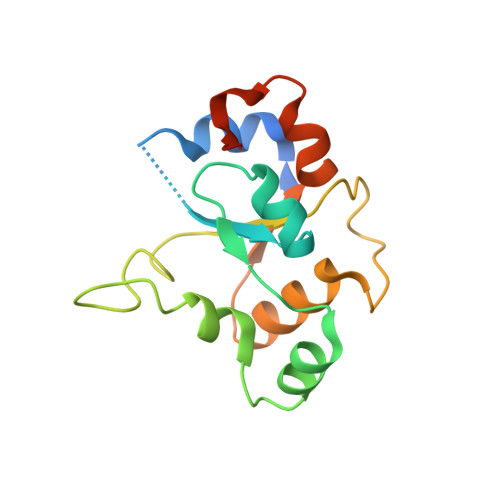A Distinct Interaction Mode Revealed by the Crystal Structure of the Kinase p38alpha with the MAPK Binding Domain of the Phosphatase MKP5.
Zhang, Y.Y., Wu, J.W., Wang, Z.X.(2011) Sci Signal 4: ra88-ra88
- PubMed: 22375048
- DOI: https://doi.org/10.1126/scisignal.2002241
- Primary Citation of Related Structures:
3TG1, 3TG3 - PubMed Abstract:
The mitogen-activated protein kinase (MAPK) cascades play a pivotal role in a myriad of cellular functions. The specificity and efficiency of MAPK signaling are controlled by docking interactions between MAPKs and their cognate proteins. Many MAPK-interacting partners, including substrates, MAPK kinases, phosphatases, and scaffolding proteins, have linear sequence motifs that mediate the interaction with the common docking site on MAPKs. We report the crystal structure of p38α in complex with the MAPK binding domain (KBD) from MAPK phosphatase 5 (MKP5) at 2.7 Å resolution. In contrast to the well-known docking mode, the KBD binds p38α in a bipartite manner, in which two distinct helical regions of KBD engage the p38α docking site, which is situated on the back of the p38α active site. We also determined the crystal structure of the KBD of MKP7, which closely resembles the MKP5 KBD, suggesting that the mechanism of molecular recognition by the KBD of MKP5 is conserved in the cytoplasmic p38- and c-Jun N-terminal kinase-specific MKP subgroup. This previously unknown binding mode provides new insights into how MAPKs interact with their binding partners to achieve functional specificity.
Organizational Affiliation:
Ministry of Education Key Laboratory for Protein Science, School of Life Sciences, Tsinghua University, Beijing 100084, PR China.















